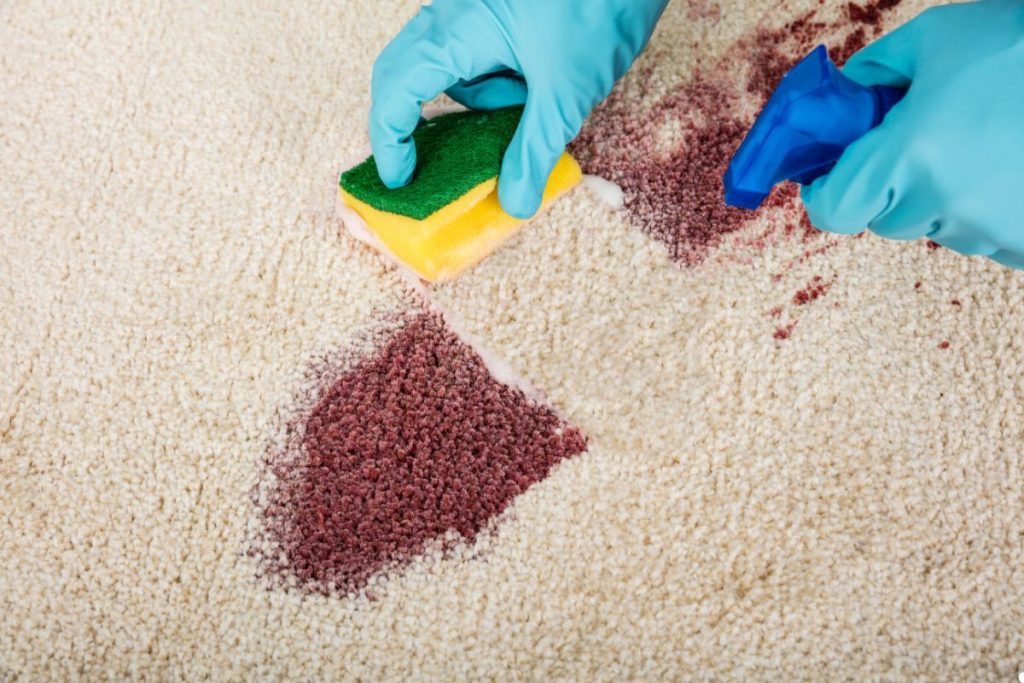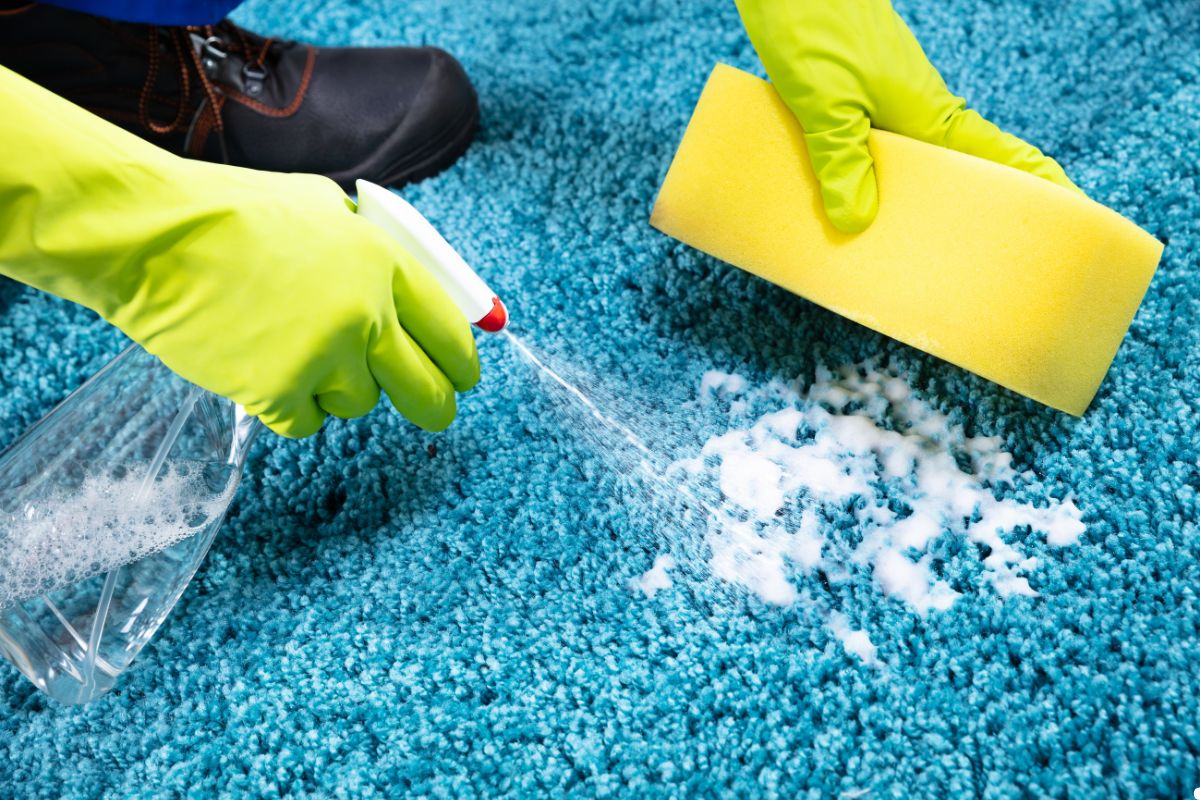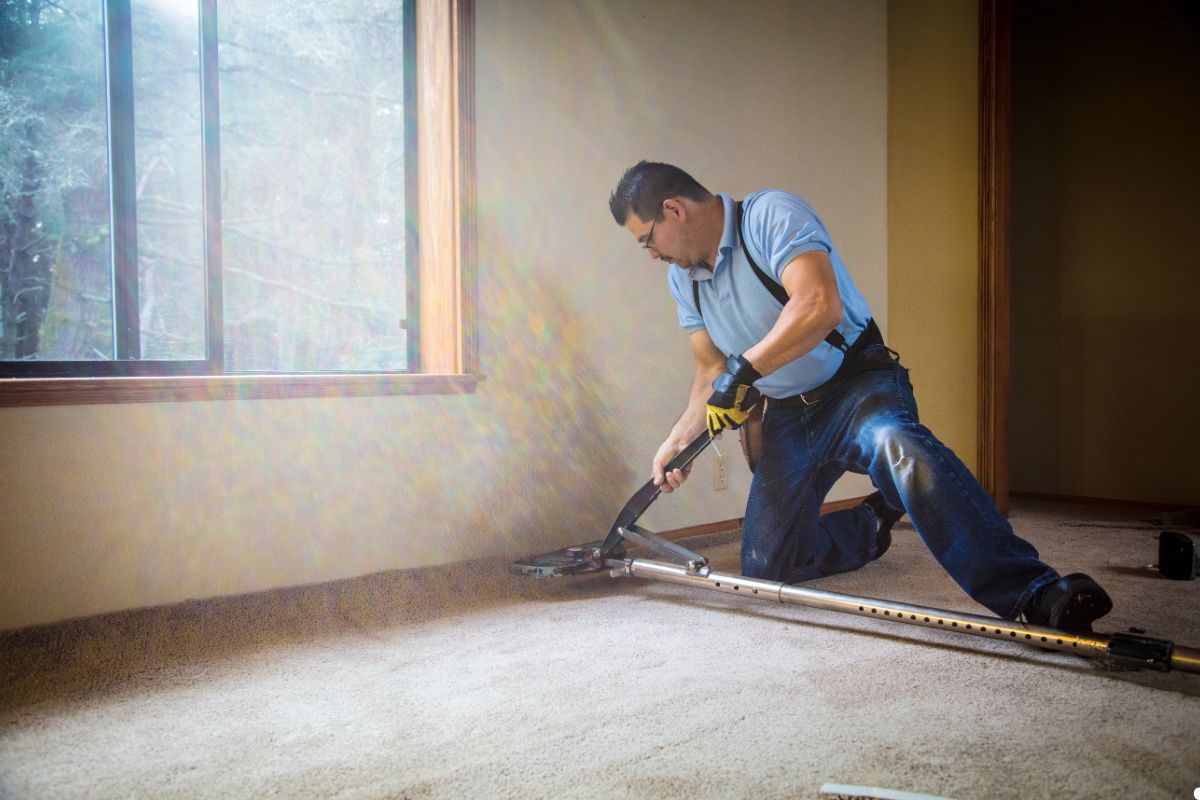
Is carpet unhealthy? It’s a question many homeowners across the USA ask, especially those concerned about allergies, asthma, or general indoor air quality. The simple answer is: carpet can contribute to an unhealthy indoor environment if not chosen carefully and maintained properly, but it doesn’t have to be inherently unhealthy. Like many things in your home, the health impact of your carpet largely depends on its type, age, and how well you take care of it. This article explores the potential concerns and provides practical advice for ensuring your carpet contributes to a comfortable and healthy living space. Have questions or need help choosing the right carpet for your home? Call us today we’re here to help!
The Common Question: Is Carpet Bad for Your Health?
Concerns about carpet often stem from its ability to trap particles. Unlike hard surfaces where dust and allergens are easily visible and wiped away, carpet fibers can hide dust mites, pet dander, pollen, mold spores, and other pollutants. If these trapped particles become airborne again through activity or inadequate cleaning, they can potentially trigger allergies or respiratory issues for sensitive individuals. We’ll delve into these specific concerns and balance them with the benefits and solutions available. While carpets can harbor pollutants, quality carpet cleaning services offer a solution to keep your flooring fresh and hygienic. Understanding both sides helps you make informed decisions about the flooring in your US home.

Potential Health Concerns Linked to Carpets
While cozy and comfortable, carpets can harbor several potential health hazards if neglected:
- Allergens: Carpets are notorious for trapping common allergens like dust mites, pet dander, pollen, and mold spores. These microscopic particles can trigger allergic reactions or asthma symptoms in susceptible people.
- Trapped Pollutants: Dirt, dust, pesticides tracked in from outside, food crumbs, and various airborne particles can settle deep within carpet fibers. Over time, these can accumulate and potentially degrade indoor air quality.
- Volatile Organic Compounds (VOCs): Some new carpets and the adhesives used for installation can release Volatile Organic Compounds (VOCs) into the air through a process called off-gassing. While this usually diminishes over time, VOCs can cause temporary symptoms like headaches, dizziness, or respiratory irritation, especially in poorly ventilated areas.
- Mold and Mildew Growth: Carpets in damp or humid environments (like basements or areas prone to spills) are susceptible to mold and mildew growth. Mold spores can cause allergic reactions, respiratory problems, and release mycotoxins, posing a significant health risk.
Balancing the Equation: Carpet’s Benefits and Healthy Options
Despite the potential concerns, carpet offers significant benefits that homeowners appreciate:
- Comfort and Warmth: Carpet provides a soft, comfortable surface underfoot and acts as an insulator, helping to keep rooms warmer in winter.
- Noise Reduction: It effectively dampens sound, making homes quieter and more peaceful.
- Safety: Carpet provides a less slippery surface than hard flooring, potentially reducing slips and falls, especially for children and the elderly.
Furthermore, manufacturers are increasingly offering healthier carpeting solutions. Look for carpets certified with low VOC emissions (like those meeting the Carpet and Rug Institute’s Green Label Plus standard). Proper installation using low-VOC adhesives is also crucial. Choosing the right type of carpet pile and material can also make a difference in how easily it traps dirt and how easy it is to clean.
Maintaining Healthy Carpets: Tips and Best Practices
The key to minimizing health risks associated with carpet lies in consistent and proper maintenance:
- Vacuum Regularly: Vacuum high-traffic areas several times a week and the entire carpeted area at least once weekly. Use a vacuum cleaner with strong suction and a HEPA (High-Efficiency Particulate Air) filter to effectively capture fine particles and allergens instead of recirculating them.
- Professional Cleaning: Schedule regular professional carpet cleaning every 12-18 months, or more often if you have pets, children, or allergy sufferers. Professional methods like hot water extraction (steam cleaning) deep clean fibers and remove embedded dirt and allergens that vacuuming misses.
- Control Humidity: Keep indoor humidity levels below 50% to discourage dust mite proliferation and prevent mold growth. Use dehumidifiers in damp areas like basements.
- Clean Spills Immediately: Address spills promptly and correctly to prevent stains and moisture from soaking deep into the carpet padding, which can lead to mold.
- Use Doormats: Place high-quality doormats at all entrances and encourage family members and guests to wipe their feet thoroughly (or remove shoes) to reduce the amount of dirt and pollutants tracked onto the carpet.
Knowing When It’s Time to Replace Your Carpet
Even with excellent care, carpets don’t last forever. Old, worn-out carpet can become increasingly difficult to clean effectively and may pose health risks. Signs it might be time to replace your carpet include:
- Persistent Odors: Lingering smells (pet accidents, mildew, smoke) that professional cleaning can’t eliminate.
- Visible Mold or Mildew: Any signs of mold growth, especially after water damage.
- Significant Stains: Widespread, set-in stains that detract from appearance and hygiene.
- Matting and Wear: Severe flattening and fraying in high-traffic areas that trap more dirt and are hard to clean.
- Increased Allergy Symptoms: If allergy or asthma symptoms worsen despite regular cleaning, the carpet might be harboring excessive allergens.
- Age: Most carpets have a lifespan of 5-15 years, depending on quality and use. Older carpets naturally accumulate more contaminants.

The Verdict: Healthy Carpeting is Possible
So, is carpet unhealthy? Not necessarily. While it requires more diligent maintenance than hard surface flooring to keep it healthy, carpet can be a comfortable and safe choice for your home. The keys are:
- Choosing Wisely: Opt for lower-pile, high-quality carpets, potentially with low-VOC certifications.
- Maintaining Diligently: Implement a regular cleaning schedule including frequent vacuuming with a HEPA filter and periodic professional deep cleaning.
- Acting Quickly: Address spills immediately and control indoor humidity.
- Replacing Timely: Recognize when your carpet has reached the end of its lifespan and needs replacement.
By taking these steps, you can enjoy the comfort and aesthetic benefits of carpet without compromising your family’s health. With our services, you don’t have to choose between comfort and cleanliness—we deliver both.
Frequently Asked Questions (FAQs)
Is carpet or hardwood better for allergies?
Generally, hard surface flooring like hardwood or tile is considered easier to keep free of allergens because dust and dander remain on the surface and can be easily wiped or mopped away. However, a well-maintained, regularly cleaned low-pile carpet using a HEPA vacuum and professional services can also be suitable for many allergy sufferers. The key is diligent cleaning. Breathe easier with the right flooring choice for your home. Contact us today to explore allergy-friendly options and expert cleaning solutions!
How often should I professionally clean my carpets for health?
Most experts, including the EPA and carpet manufacturers, recommend professional hot water extraction cleaning every 12-18 months. However, households with pets, children, smokers, or individuals with allergies/asthma may benefit from cleaning every 6-12 months to maintain optimal.
What type of vacuum is best for carpet health?
A vacuum cleaner with strong suction, a rotating brush designed for your carpet type, and most importantly, a sealed HEPA filter system is best. The HEPA filter traps microscopic allergens like dust mites, pet dander, and pollen, preventing them from being blown back into the air.
Are new carpets toxic?
New carpets can release Volatile Organic Compounds (VOCs) from the fibers, backing, and adhesives used in installation. While levels are typically low and dissipate over time, choosing low-VOC certified carpets (like CRI Green Label Plus) and ensuring good ventilation (opening windows) after installation can minimize exposure. The “new carpet smell” is largely due to these VOCs.
Can mold in carpet really make you sick?
Yes, absolutely. Mold spores in carpet can trigger allergic reactions, asthma attacks, and other respiratory problems. Some molds produce mycotoxins which can cause more serious health issues with prolonged exposure. If you suspect mold in your carpet, it’s crucial to address it immediately, often requiring professional remediation or carpet replacement. Call us today to schedule an inspection and ensure your home stays safe and healthy.
